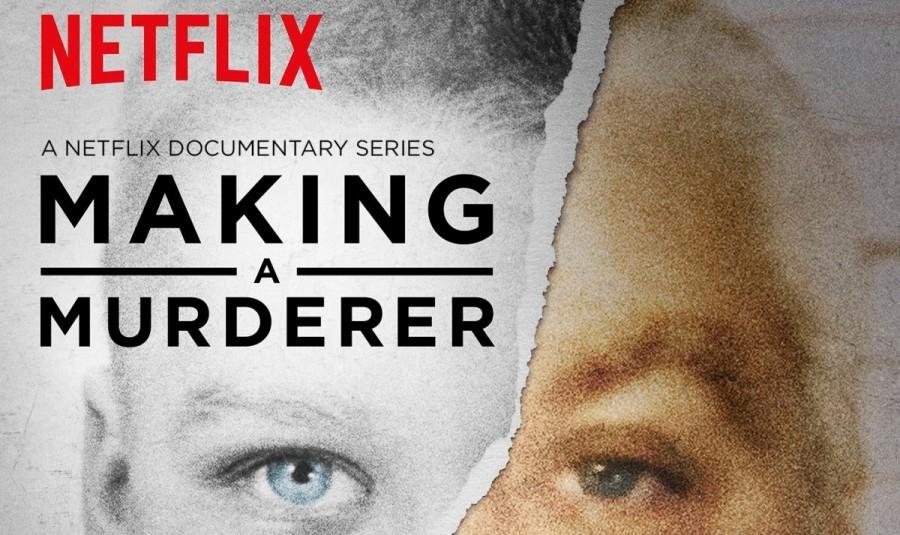Netflix documentary series ‘Making a Murderer’ brings up pressing issues
January 17, 2016
With the number of potentially innocent people behind bars increasing with each passing year, our criminal justice system comes under question more and more. Netflix’s new documentary series, “Making a Murderer,” tells the skeptical story of a Wisconsin man, Steven Avery, who was supposedly wrongly convicted not just once, but twice.
The series begins in 1985, when Avery was accused of rape and the attempted murder of his cousin, and served a sentence of 18 years. He was later exonerated after new DNA evidence was discovered that proved his innocence.
The department supposedly received a phone call in 1995 from a local detective claiming that they had someone in custody for a crime that another man has committed, but did not investigate further. The documentary highlights the negligence of the Manitowoc County Sheriff’s Office; had they have investigated this phone call instead of brushing it off, Avery could have been freed 10 years sooner. The three deputies involved in the phone call, Andrew Colborn, James Lenk, and Kenneth Peterson were deposed after Avery successfully sued the department for wrongful imprisonment.
After being let go in 2003, he faced another conviction for murder only four years later. He and his nephew, Brendan Dassey, were accused of the murder of photographer Teresa Halbach, who often took photos in Avery’s junkyard. There were multiple pieces of evidence that supported the accusation, such as Halbach’s vehicle being found in Avery’s property, a bullet with Halbach’s DNA discovered in his garage, and his blood in her car. The prosecution was heavily based on Avery’s blood that was found in Halbach’s vehicle.
The documentary series counters every piece of evidence that was presented. It strongly suggests that the Manitowoc County Sheriff’s Office was embarrassed about their wrong accusation, and was out to imprison Avery a second time as a way to redeem themselves. The series makes its audience doubt even the most solid pieces of evidence, by presenting some of the most far-fetched scenarios.
The documentary’s highest point was the discovery of a small hole, just big enough for a needle, in the vial of blood that was collected from Avery’s 1985 case, which lead to the question of whether or not someone had taken the blood and placed in in Halbach’s vehicle to frame him. It also points out that, curiously, Lenk, one of the three deputies involved in the phone call from 1995, was involved in searches and investigations of the murder, even after being ordered to keep away from the case.
However, the majority of crime and mystery documentaries are notorious for leaving out details on the other end of the spectrum. Unfortunately, “Making a Murderer” is no different. Attorney Ken Kratz, a prosecutor who argued against Avery, pointed out how heavily weighted the documentary is toward Avery, and how the documentary failed to show more than half of what the jury had against him in multiple interviews.
Kratz shut down many of the evidence-planting theories with an even longer list of stronger evidence that the documentary looked over, such as Avery’s sweat found in the hood of Halbach’s vehicle and a phone, computer, and camera that was burned on his property. In addition, his ex-fiancée recently reported his violence and abuse toward her in several interviews. She said that she was forced by him to defend him in the documentary and later claimed that he is a “guilty, abusive monster.”
Nonetheless, this askew view that the documentary presents was effective, as it created a large following; people have created petitions with over a 100,000 signatures to grant Avery a presidential pardon from his lifetime sentence, which received a response from the White House. However, Obama is unable to grant a pardon, as Avery is a state prisoner, not a federal prisoner.
“Making a Murderer” creators Moira Demos and Laura Ricciardi drew most of their audience from making Steven Avery’s case seem like the largest injustice ever carried. A majority of the episodes are still photos with voiceovers and live footage with chilling music in the background, yet it still manages to induce binge watching, dragging crucial points throughout the episodes.
The show shouldn’t be watched to determine or solidify Avery’s innocence. Instead it should be viewed as something that sheds light on how the criminal justice system failed a man, and still continues to do so to many others.




